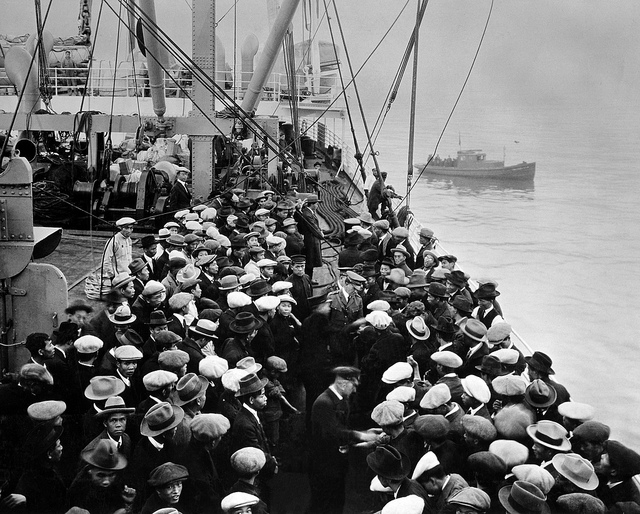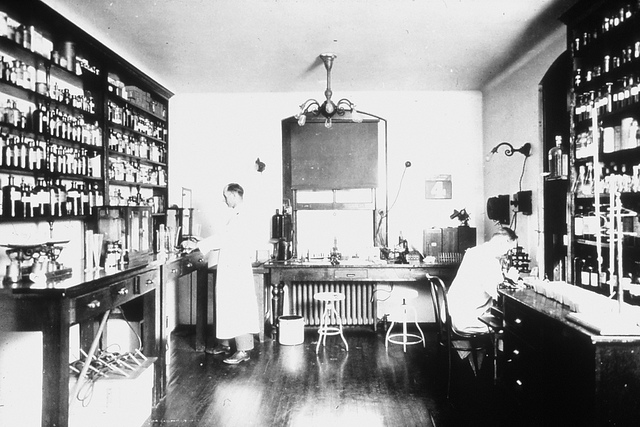 U.S. Marine Hospital No. 21, a.k.a. Quarantine Station | via National Library of Medicine, NIH
U.S. Marine Hospital No. 21, a.k.a. Quarantine Station | via National Library of Medicine, NIH
Located on the northern shore of Staten Island, Quarantine Station was New York’s first line of defense against infectious diseases like smallpox, cholera, typhus, and yellow fever. Immigrants arriving from abroad were presumed to be carrying these diseases so the choice of Staten Island for this job was clear — at least to city officials — as their population was just a fraction of Manhattan’s.
Health inspectors boarded the ships that sat in the harbor, their holds filled with passengers. When a sick traveler was uncovered, they would mark the vessel and divert everyone to Quarantine Station until they could be deemed disease-free. As many as 1,500 people might be confined there at a time. In 1891 immigration law made it mandatory that all immigrants coming into the United States undergo inspection by Public Health Service physicians.
When the Quarantine hospital was built in 1799, it was surrounded by countryside. But by the late 1850s prosperity had arrived in the form of new homes built for vacationing Manhattanites. The hospital became a contentious battleground, a problem the community saw fit to solve. So, a mob of arsonists burned it down. When the fire companies slowly rolled their way onto the scene, they stood and watched, claiming their hoses didn’t work. Harbor policemen were driven off by natives throwing rocks. City police didn’t even answer the call.
 Public health workers checking immigrants for signs of illness | via National Library of Medicine, NIH
Public health workers checking immigrants for signs of illness | via National Library of Medicine, NIH
In 1857 the state agreed to move Quarantine to Seguine’s Point, on the more remote south shore of the island. But arsonists destroyed it when the facility was half-finished.
After the fires, Quarantine was relocated offshore to a floating hospital named the Florence Nightingale. In 1866, it was moved to two islands, Swinburne and Hoffman, created from landfill off South Beach, Staten Island. Years later the facility moved to Ellis Island, where it became the largest inspection center in New York Harbor. Today, the Ellis Island Southside hospitals remain abandoned, awaiting possible funding for rehabilitation.
 Hygienic Laboratory in the Marine Hospital | via National Library of Medicine, NIH
Hygienic Laboratory in the Marine Hospital | via National Library of Medicine, NIH
Businesses Mentioned Above
[blankslate_pages id=”d543eb0c7661b6″ type=”card” show_photo=”true” utm_content=””][/blankslate_pages]

